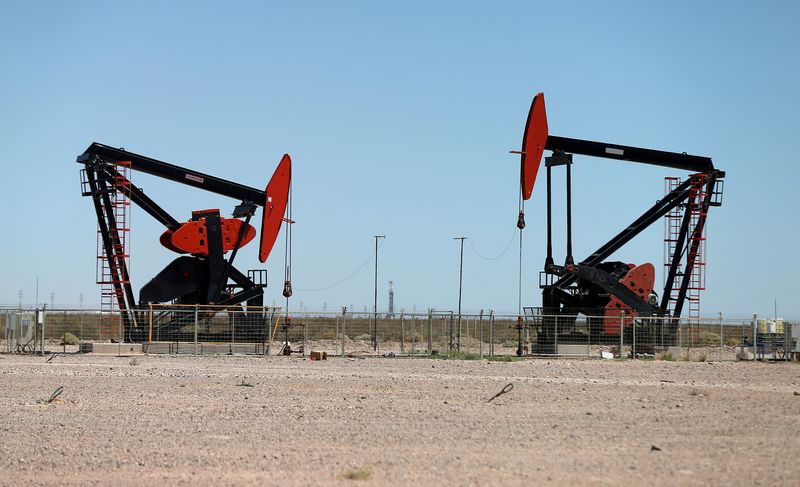Commodities
Oil stabilises ahead of US inflation data and OPEC+ meeting

By Robert Harvey and Deep Kaushik Vakil
LONDON (Reuters) -Oil prices held steady on Friday as investors awaited U.S. inflation data for clues on the demand outlook before turning attention to Sunday’s OPEC+ meeting to determine the state of supply into next year.
futures for July delivery were down 5 cents at $81.81 a barrel by 1135 GMT while the more liquid August futures were up 21 cents at $82.09.
The spread between the two contracts hit an 11-month low after closing in contango for the first time this year on Thursday.
U.S. West Texas Intermediate (WTI) crude futures were up 8 cents at $77.99.
Both benchmarks were on course for their worst monthly declines since December after dropping in the previous session on a surprise build in U.S. fuel inventories.
Higher refinery utilisation brought a deeper than expected draw in stocks in the week to May 24, Energy Information Administration (EIA) data showed.
However, gasoline inventories rose by 2 million barrels, against expectations of a 400,000 barrel draw and higher demand ahead of the Memorial Day weekend.
“U.S. summer travel season kicked off with Memorial Day weekend, with initial indications showing strong driving and flying activity — but fuel use looks more muted, implying efficiency gains,” Citi analysts wrote in a note.
Euro zone inflation rose more than expected in May, Eurostat data showed. The increase is unlikely to deter the European Central Bank from cutting borrowing costs next week, but it could slow or halt the rate-cutting cycle in the coming months.
The oil market has been under pressure in recent weeks over the prospect of borrowing costs staying higher for longer, which ties down funds and can curb oil demand.
U.S. inflation data is due to be released at 1230 GMT.
Markets are also awaiting the OPEC+ meeting on Sunday, with the producer group working on a complex deal that would allow it to extend some of its deep oil production cuts into 2025, said three sources familiar with OPEC+ discussions.

“OPEC+ is likely to stay in pre-emptive market management mode to keep contango away and prevent oil prices from spiralling to higher levels,” said Rystad Energy analyst Mukesh Sahdev.
Meanwhile, analysts in a Reuters poll lowered their 2024 oil price forecast for the first time since February, reflecting lower risks to supply from continuing conflict in the Middle East and Ukraine. [O/POLL]
Commodities
Oil prices rise; U.S. crude inventories plunge, Russia-Ukraine truce eyed
Commodities
India’s Reliance to stop buying Venezuelan oil over US tariffs, sources say
Commodities
Oil prices climb on Venezuela supply worries

 Forex3 years ago
Forex3 years agoForex Today: the dollar is gaining strength amid gloomy sentiment at the start of the Fed’s week

 Forex3 years ago
Forex3 years agoUnbiased review of Pocket Option broker

 Forex3 years ago
Forex3 years agoDollar to pound sterling exchange rate today: Pound plummeted to its lowest since 1985

 Forex3 years ago
Forex3 years agoHow is the Australian dollar doing today?

 Cryptocurrency3 years ago
Cryptocurrency3 years agoWhat happened in the crypto market – current events today

 World3 years ago
World3 years agoWhy are modern video games an art form?

 Commodities3 years ago
Commodities3 years agoCopper continues to fall in price on expectations of lower demand in China

 Economy3 years ago
Economy3 years agoCrude oil tankers double in price due to EU anti-Russian sanctions























